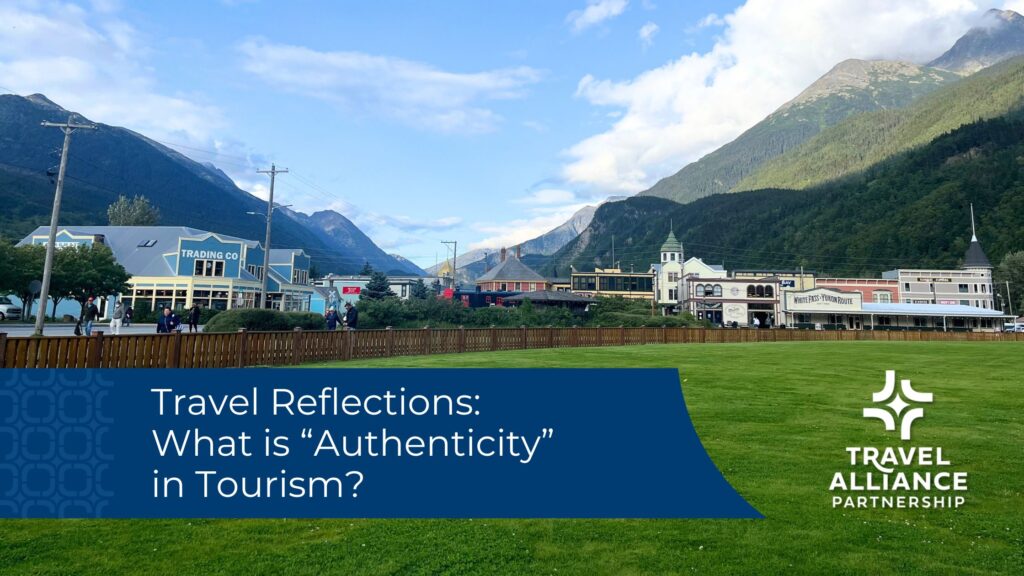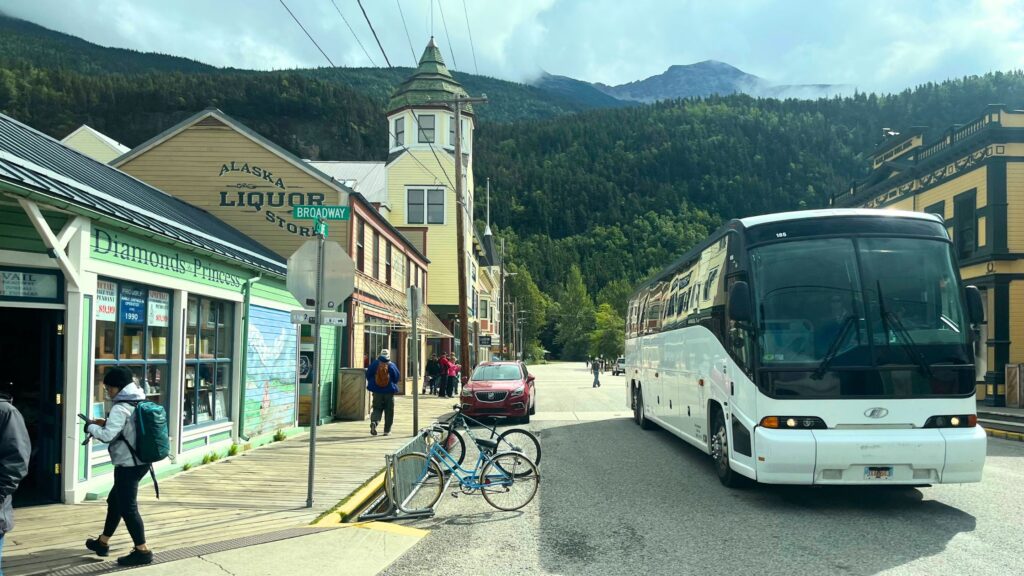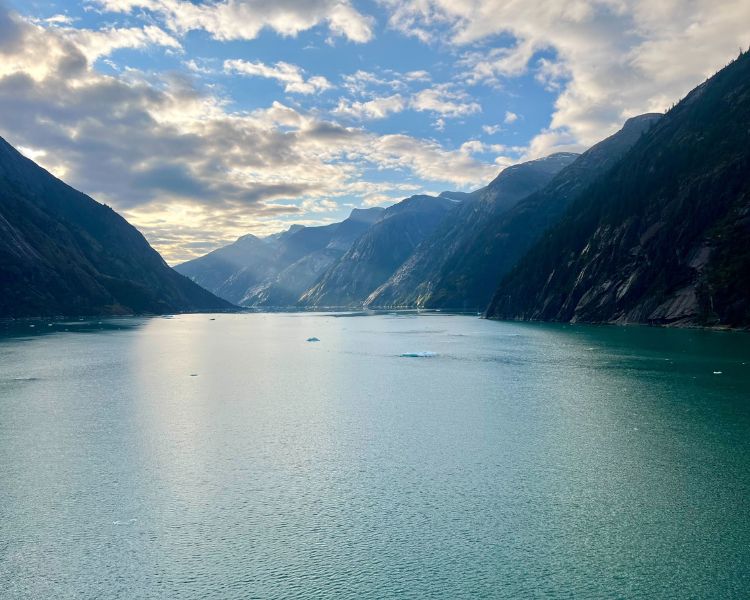Travel Reflections: What is “Authenticity” in Tourism?
In August, my husband and I traveled to Alaska’s Inside Passage on a cruise that stopped in the ports of Sitka, Skagway and Juneau, Alaska. It was an incredible trip full of greenery, crisp Alaskan air, wildlife, and delicious seafood (so much salmon!). It also was incredibly striking to stand in these small towns, where life was so remote and so different from our own. Talking to the locals about things we take for granted (like 2-day shipping via Amazon Prime) opened our eyes to the modern challenges of living in our 49th state. It also, in many ways, made us realize how integral tourism was to these communities, and brought forward the challenges of maintaining authenticity in tourism.

A Study in Authenticity: Skagway, Alaska
Standing on a tour in Skagway, our guide asked how many passengers were on our ship. About 4,500 we answered. “That’s 5 times the size of the town,” he told us. Looking around, we were docked next to two other ships, whose overall size added a whopping 15,000 people into the town that day.
We were told that cruise ships are the bread and butter keeping Skagway alive. During the tourism season, May-October, the town is bustling with Main Street shopping, the single brewery is full of eager customers, helicopters are departing every 15 minutes on tours and residents are busy sharing their lives with those who visit.
On a typical winter day in Skagway, the town looks quite different. Shops remain closed, the library becomes the town’s main attraction as the only source of Wi-Fi in the area, and the Rec Center (a grey building at the end of Main Street) is the gym, meeting hall, and only real source of activity in the area. Most residents don’t even let their kids play outside, with the only hospital found nearly 2 hours away and largely inaccessible.
During my day in Skagway, I found myself thinking about what it takes for the town to maintain its authenticity during a season when the daily visitation numbers far exceed its residents. It had me asking, “what is authenticity in tourism?” and “how do we preserve the experience?”
Maintaining Authenticity in Tourism
While tourism is a significant part of Skagway’s economy, the town has managed to retain its historical charm and cultural authenticity, through:
- Historic Preservation: Skagway played a crucial role during the Klondike Gold Rush, and much of its history is preserved in the Klondike Gold Rush National Historical Park. Visitors can explore restored buildings and learn about the town’s past.
- Architectural Preservation: The town has made efforts to preserve its historical architecture and cultural heritage, offering a glimpse into life during the gold rush era. There is even an ordinance against altering or expanding many of the Main Street shops in an effort to preserve the look and feel of these original buildings.
- Local Experiences: Skagway offers authentic experiences such as hiking the Chilkoot Trail, exploring the White Pass & Yukon Route Railroad, and engaging with local artisans and craftspeople. We participated in a tour that took us up to the Musher’s Camp, where we learned about training sled dog teams and the origins of the Iditarod.
- Community Engagement: The local community is actively involved in tourism, providing guided tours and sharing personal stories that enrich the visitor experience.
- Natural Beauty: Surrounded by stunning landscapes, Skagway offers opportunities for outdoor activities like hiking, wildlife viewing, and exploring the natural environment, which are integral to the Alaskan experience.

Inauthenticity in Tourism
So, on the flip side, what makes a tourism destination inauthentic? When we start to see a destination prioritize commercial interests over genuine cultural experiences, we see an emergence of:
- Cultural Commodification: Local traditions and customs are altered or exaggerated to cater to tourists, losing their original meaning and significance.
- Over-Development: The natural landscape or historical sites are overshadowed by modern infrastructure, diminishing the area’s original charm.
- Staged Experiences: Events or activities are created solely for tourists, lacking the spontaneity and authenticity of real local life.
- Loss of Local Identity: The influx of global brands and businesses can overshadow local enterprises, eroding the unique character of the destination. (We saw a little bit of this in Juneau at the port, where a jewelry store seemed to emerge every 10 feet!)
- Tourist-Centric Modifications: Changes are made to accommodate tourists’ expectations, which might not align with the local culture or environment.
These factors can lead to a superficial experience that doesn’t truly reflect the destination’s heritage or way of life.
The Impacts of Inauthentic Tourism
Inauthentic tourism can have several negative impacts on both the destination and its local community. Local traditions and customs may be altered or lost as they are modified to meet tourist expectations, leading to a dilution of cultural heritage. As destinations cater more to tourists, they may lose their unique cultural identity, becoming indistinguishable from other tourist hotspots. And, in some cases, local residents may be displaced to make way for tourist infrastructure, leading to social and economic disruption.
Tourists may leave with a shallow understanding of the destination, having experienced only a staged version of the local culture. These impacts can undermine the long-term sustainability of tourism in a destination, affecting both the community and the visitor experience.
Supporting Authenticity in Tourism
While we all hope to serve and welcome visitors into our destinations, encouraging the protection of local traditions, crafts and customs should always be considered. Small acts, such as supporting local artisans, hosting cultural festivals, preserving historical sites, focusing on sustainable development, providing guests with education and awareness of the area, and engaging local communities in tourism planning and decision-making can make a huge difference. This ensures that tourism development aligns with the community’s values and needs, and that locals benefit economically.
By implementing these strategies, destinations can create a tourism experience that is both authentic and sustainable, benefiting both visitors and the local community.


Author
Related Posts
How Curated Experiences Can Help Your Tourism Marketing
In years past, travelers may have been satisfied to see sites like the Eiffel Tower or Colosseum; now they want to get behind the scenes,...
Marketing for Group Travel: Building Solid Relationships with Tour Operators
Group travel is a significant segment of the tourism market, and if you want to see those buses pulling up to the curb and filling…
